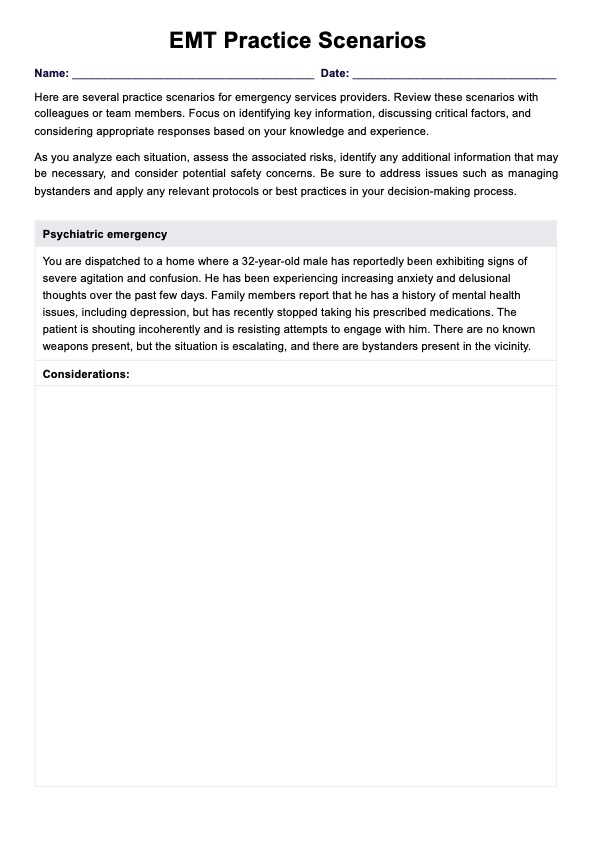Simulate real-life situations to enhance practical skills, problem-solving, and teamwork in a controlled environment.

EMT Practice Scenarios
Use our free EMT Practice Scenarios worksheet to enhance your EMT skills. Download the template here.
Use Template
EMT Practice Scenarios Template
Commonly asked questions
There are a range of good skills for an EMT. However, critical thinking and decision-making are the most beneficial in these situations.
Anatomy, physiology, medical procedures, and emergency protocols.
EHR and practice management software
Get started for free
*No credit card required
Free
$0/usd
Unlimited clients
Telehealth
1GB of storage
Client portal text
Automated billing and online payments











